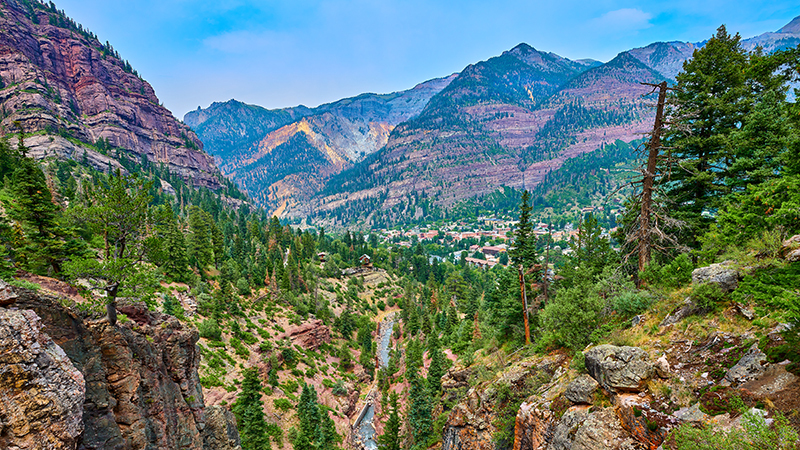May 10, 2021
Today, state-based conservation organizations released a public letter urging Colorado lawmakers at the federal, state, and local levels to embrace and lead in the implementation of the goal to conserve and restore 30 percent of lands and waters by 2030. The letter comes on the heels of a Biden-Harris administration report — Conserving and Restoring America the Beautiful — that detailed President Biden’s framework for achieving the ten-year goal of conserving 30 percent of the U.S. by 2030. This bold and inclusive vision for conserving America’s lands, water, and wildlife will support the efforts of local and rural communities, Tribal Nations, private landowners, and communities on the frontlines of conserving, stewarding, restoring, using, and enjoying nature.
The letter notes that:
The national 30×30 effort will require state-level action. State agency collaboration and engagement with communities and local governments across the state, that have an intimate knowledge of land stewardship and conservation, will also be a critical undertaking in this effort. Colorado’s history of conservation leadership makes the state well-positioned to be a major contributor to this national and international effort, and there is strong support for 30×30 in the state.
According to the 2021 Colorado College Conservation in the West poll, more than 80 percent of Coloradans support a 30×30 goal and 90 percent support creating new national parks, national monuments, national wildlife refuges, and tribal protected areas.
The report was submitted to the National Climate Task Force and developed by the U.S. Departments of the Interior, Agriculture, and Commerce, and the White House Council on Environmental Quality.
Spokespeople for groups that worked on the letter released the following statements:
“The outdoors have always been central to our state’s identity and economy. That’s just one of the reasons why Colorado must lead the way among the states by working to conserve and restore 30 percent of our state’s lands by 2030,” said Jessica Goad, deputy director of Conservation Colorado. “Achieving this ambitious goal will conserve nature and wildlife, connect people, mitigate the worst impacts of climate change, protect our economy, increase our food and water security, and safeguard Coloradans’ quality of life for generations to come.”
“The Administration’s report makes clear that local and state driven conservation and restoration priorities are central to this new initiative, including honoring current stewardship by private landowners and continued access to public lands for outdoor recreationists,” said Suzanne O’Neill, executive director of Colorado Wildlife Federation. “A key opportunity is to ensure our thriving wildlife populations and habitats will be thoughtfully conserved for future generations to enjoy.”
“Colorado has a long and proud history of supporting community led conservation efforts, from the Hermosa Creek Watershed Protection Act to the bi-partisan passage of full funding for the Land and Water Conservation Fund,” said Jim Ramey, Colorado State Director for The Wilderness Society. “President Biden and Secretary Haaland have made important commitments that emphasize local collaboration with Tribes, state and local governments, ranchers, private landowners and all others in pursuit of protecting 30% of our lands by 2030. People from every corner of Colorado have a deep love of our public lands, local parks and other natural areas and are committed to working together to leave our state better than we found it for future generations.”
“With the federal government laying out its vision to conserve 30% of our nation’s lands and waters by 2030, it’s time for Colorado and other Western states to meet the Biden administration’s commitment by creating and enacting state-level plans to protect 30×30,” said Andre Miller, Western Lands policy analyst for Western Resource Advocates. “The report shows that states must play a critical role in achieving a national 30×30 goal. By working with communities and local governments, Colorado can have an outsized impact on this effort while protecting our economy, safeguarding natural ecosystems, increasing equity in the outdoors, and preventing the worst impacts of climate change. In the face of significant loss of natural lands, Colorado and other states across the West need to take concrete action now to ensure we protect our irreplaceable lands, waters, and wildlife so future generations can enjoy them as we do.”
“As a headwaters state, Colorado has a proud history of managing our most precious resource through community-led planning at a statewide scale. Our state is well-situated to achieve the vision of conserving 30% of our lands and waters over the next decade and to be a leader in the intermountain west,” said Hattie Johnson, Southern Rockies Stewardship Director for American Whitewater. “Community centered and creative solutions that benefit all Coloradans will be needed to meet this bold conservation goal. As paddlers, we have a deep love of our rivers and a front row seat to the already apparent impacts of climate change in Colorado and across the country. We are encouraged by the current administration’s leadership to ensure the protection of the places we love.”
Contact
Jamie Trafficanda, 720-763-3737, jamie@westernresources.org


